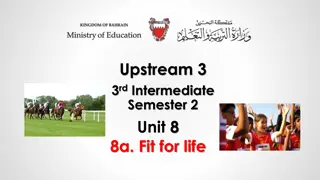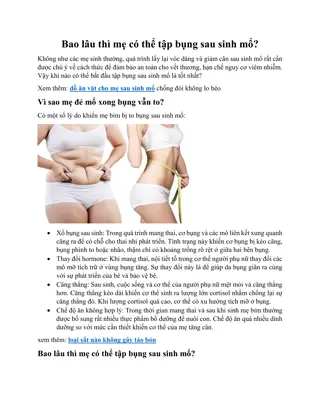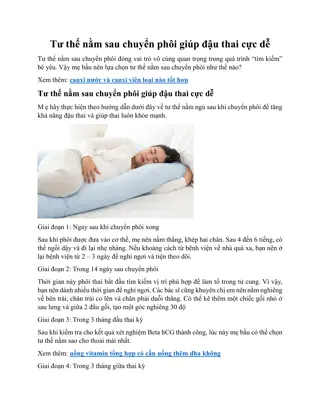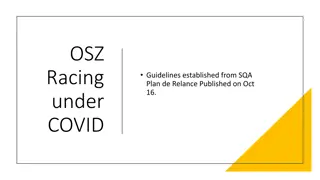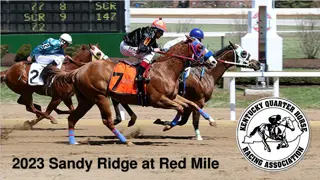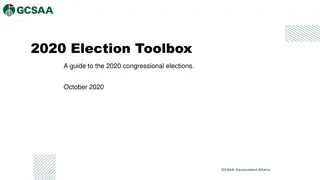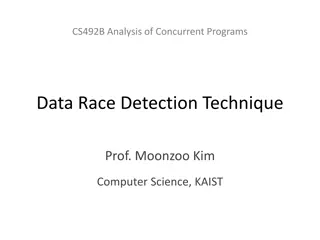The Complexities of Defining Two or More Races
Race is a socially constructed concept, making accurately counting the multiple race population a challenging task. The emergence of the Two or More Races category has provided individuals the opportunity to self-identify with more than one race. This category has seen an increase in representation over the years, with various combinations of race reported. However, there is a notable gap in the literature regarding the statistical composition and changes in the Two or More Races category over time, particularly in an institutional context.
Download Presentation

Please find below an Image/Link to download the presentation.
The content on the website is provided AS IS for your information and personal use only. It may not be sold, licensed, or shared on other websites without obtaining consent from the author.If you encounter any issues during the download, it is possible that the publisher has removed the file from their server.
You are allowed to download the files provided on this website for personal or commercial use, subject to the condition that they are used lawfully. All files are the property of their respective owners.
The content on the website is provided AS IS for your information and personal use only. It may not be sold, licensed, or shared on other websites without obtaining consent from the author.
E N D
Presentation Transcript
Defining Two or More Races: A Turbulent Journey Robbie Janik - Assistant Director, Survey Research and Evaluation Averie Hamilton - Graduate Assistant, SRE Institutional Research and Decision Support
Race a category of humankind that shares certain distinctive physical traits phenotype a class or kind of people unified by shared interests, habits, or characteristics socially constructed Fluid concept Consequentially, accurately counting the multiple race population is a complex exercise (Jones & Bullock, 2013). I N D I A N A U N I V E R S I T Y P U R D U E U N I V E R S I T Y 1 I N D I A N A P O L I S
Race cont. Expressed racial identities- the words and actions (e.g., races reported on official documents) that convey beliefs about an individual s race (Harris & Sims, 2002) I N D I A N A U N I V E R S I T Y P U R D U E U N I V E R S I T Y 2 I N D I A N A P O L I S
Two or More Races IPEDS Allowed individuals to self- identify with more than one race In 2010, began using the Two or More Races category in reporting By 2010, all institutions were required to report using new race categories U.S. 2000 Census IUPUI I N D I A N A U N I V E R S I T Y P U R D U E U N I V E R S I T Y 3 I N D I A N A P O L I S
U.S. Two or More Races Overall1 (18-24 year olds)2 2010: 2.9% 2014: 3.6% Combinations within Two or More Races in 20101 2000: 2.4% 2010: 2.9% White and Black/African American 19% Other Combo 28% White and Some Other Race 19% White and American Indian/Alaksa Native 16% White and Asian 18% 1Jone & Bullock (2013) 2American Community Survey I N D I A N A U N I V E R S I T Y P U R D U E U N I V E R S I T Y 4 I N D I A N A P O L I S
Gaps in the Literature Few have looked at statistical composition of Two or More Even fewer have examined changes in Two or More over time No published studies look at Two or More composition or behaviors in an institutional context I N D I A N A U N I V E R S I T Y P U R D U E U N I V E R S I T Y 5 I N D I A N A P O L I S
Fall Undergraduate Enrollment 2010 2011 2012 2013 2014 2015 Black / African American Asian American Native Hawaiian / Pacific Islander 2,312 (10%) 708 (3%) 2,363 (11%) 690 (3%) 2,411 (11%) 735 (3%) 2,379 (11%) 803 (4%) 2,352 (10%) 804 (4%) 2,159 (10%) 824 (4%) 14 (<1%) 12 (<1%) 9 (<1%) 21 (<1%) 18 (<1%) 20 (<1%) Hispanic / Latino American Indian / Alaska Native 777 (4%) 895 (4%) 1,076 (5%) 1,181 (5%) 1,269 (6%) 1,349 (6%) 49 (<1%) 40 (<1%) 28 (<1%) 34 (<1%) 30 (<1%) 21 (<1%) 340 (2%) 498 (2%) 692 (3%) 720 (3%) 796 (3%) 847 (4%) Two or more races International 643 (3%) 629 (3%) 684 (3%) 786 (3%) 882 (4%) 881 (4%) White 16,906 (76%) 16,719 (75%) 16,278 (73%) 16,178 (72%) 16,148 (72%) 15,709 (71%) Unknown 496 (2%) 390 (2%) 358 (2%) 311 (2%) 226 (1%) 175 (1%) Total Student Headcount 22,245 22,236 22,271 22,409 22,525 21,985 I N D I A N A U N I V E R S I T Y P U R D U E U N I V E R S I T Y 6 I N D I A N A P O L I S
First Time Fall Beginners 2010 2011 2012 2013 2014 2015 Black / African American 285 (10%) 320 (10%) 312 (9%) 323 (9%) 309 (8%) 268 (7%) Asian American Native Hawaiian / Pacific Islander 89 (3%) 88 (3%) 127 (4%) 153 (4%) 141 (3%) 145 (4%) 3 (<1%) 1 (<1%) 0 (<1%) 2 (<1%) 0 (<1%) 3 (<1%) Hispanic / Latino American Indian / Alaska Native 119 (4%) 179 (6%) 237 (7%) 290 (8%) 265 (7%) 295 (8%) 1 (<1%) 2 (<1%) 2 (0%) 9 (<1%) 3 (<1%) 3 (<1%) Two or more races 105 (4%) 121 (4%) 183 (5%) 159 (4%) 145 (4%) 205 (5%) International 70 (2%) 97 (3%) 127 (4%) 113 (3%) 107 (3%) 114 (3%) White 2,222 (76%) 2,226 (73%) 2,323 (69%) 2,710 (71%) 2,960 (75%) 2,878 (73%) Unknown 31 (1%) 25 (1%) 48 (1%) 36 (1%) 197 (<1%) 18 (<1%) Total Student Headcount 2,925 3,059 3,359 3,795 3,949 3,929 I N D I A N A U N I V E R S I T Y P U R D U E U N I V E R S I T Y 7 I N D I A N A P O L I S
Two or More Breakdown 2010 2011 2012 2013 2014 2015 White and Black White and Asian White and American Indian/AK Native White, Black, American Indian/AK Native Black & American Indian/AK Native 90 (27%) 144 (29%) 205 (30%) 223 (31%) 261 (33%) 310 (36%) 82 (24%) 114 (23%) 203 (29%) 196 (27%) 212 (27%) 212 (25%) 83 (24%) 119 (24%) 130 (19%) 127 (18%) 137 (17%) 132 (16%) 13 (4%) 19 (4%) 32 (5%) 34 (5%) 39 (5%) 34 (4%) 20 (6%) 27 (5%) 23 (3%) 21 (3%) 21 (3%) 26 (3%) Asian and Native Hawaiian 15 (4%) 19 (4%) 19 (3%) 23 (3%) 31 (4%) 40 (5%) Black & Asian White, Asian, Native Hawaiian 8 (2%) 9 (3%) 11 (2%) 14 (3%) 19 (3%) 21 (3%) 20 (3%) 22 (3%) 23 (3%) 18 (2%) 23 (3%) 19 (2%) Total 2 Races Selected Total 3 Races Selected 309 (91%) 27 (8%) 450 (90%) 42 (8%) 614 (89%) 70 (10%) 635 (88%) 76 (11%) 714 (90%) 73 (9%) 764 (90%) 74 (9%) 340 498 692 720 796 847 All Two or More I N D I A N A U N I V E R S I T Y P U R D U E U N I V E R S I T Y 8 I N D I A N A P O L I S
Two or More Breakdown 2010 2011 2012 2013 2014 2015 White and Black White and Asian White and American Indian/AK Native Total White, Black, American Indian/AK Native Black & American Indian/AK Native 90 (27%) 82 (24%) 144 (29%) 114 (23%) 205 (30%) 203 (29%) 223 (31%) 196 (27%) 261 (33%) 212 (27%) 310 (36%) 212 (25%) 83 (24%) 75% 119 (24%) 130 (19%) 127 (18%) 137 (17%) 132 (16%) 76% 78% 76% 77% 77% 13 (4%) 19 (4%) 32 (5%) 34 (5%) 39 (5%) 34 (4%) 20 (6%) 27 (5%) 23 (3%) 21 (3%) 21 (3%) 26 (3%) Asian and Native Hawaiian 15 (4%) 19 (4%) 19 (3%) 23 (3%) 31 (4%) 40 (5%) Black & Asian White, Asian, Native Hawaiian 8 (2%) 9 (3%) 11 (2%) 14 (3%) 19 (3%) 21 (3%) 20 (3%) 22 (3%) 23 (3%) 18 (2%) 23 (3%) 19 (2%) Total 2 Races Selected Total 3 Races Selected 309 (91%) 27 (8%) 450 (90%) 42 (8%) 614 (89%) 70 (10%) 635 (88%) 76 (11%) 714 (90%) 73 (9%) 764 (90%) 74 (9%) 340 498 692 720 796 847 All Two or More I N D I A N A U N I V E R S I T Y P U R D U E U N I V E R S I T Y 9 I N D I A N A P O L I S
One-Year Retention Rates by Race/Ethnicity 2010 2011 2012 2013 2014 Black / African American Asian American Native Hawaiian/Pacific Islander Hispanic / Latino 65% 65% 66% 63% 65% 91% 84% 85% 81% 82% 2/3 1/1 2/2 5/7 1/1 65% 72% 67% 73% 72% American Indian/Alaska Native Two or more races International White Total Includes First-time Beginner & Transfer Students Includes Full-time & Part-time Includes Bachelor & Associate Degree Seeking Students 5/6 3/6 4/7 7/13 2/6 59% 67% 62% 68% 65% 78% 91% 89% 87% 86% 70% 71% 71% 70% 73% 70% 71% 70% 70% 72% I N D I A N A U N I V E R S I T Y P U R D U E U N I V E R S I T Y 10 I N D I A N A P O L I S
One-Year Retention Rates by Race/Ethnicity 100% 90% 80% 70% 60% 50% 40% 30% 20% 10% 0% 2010 2011 2012 2013 2014 Black / African American Asian American Hispanic / Latino Two or more races International White 2010 2011 2012 2013 2014 Black / African American Asian American Hispanic / Latino Two or more races International White 65% 65% 66% 63% 65% 91% 84% 85% 81% 82% 65% 72% 67% 73% 72% 59% 67% 62% 68% 65% 78% 91% 89% 87% 86% 70% 71% 71% 70% 73% I N D I A N A U N I V E R S I T Y P U R D U E U N I V E R S I T Y 11 I N D I A N A P O L I S
Two or More Races One-Year Retention Rates 2010 2011 2012 2013 2014 Overall Black / African American White Two or More (Black/White) 65% 65% 66% 63% 65% 65% 70% 71% 71% 70% 73% 71% 51% (n=51) 68% (n=56) 53% (n=79) 61% (n=75) 63% (n=78) 59% 100% 90% 80% 70% 60% 50% 40% 30% 20% 10% 0% 2010 2011 2012 2013 2014 Black / African American White Two or More (Black/White) 12 I N D I A N A U N I V E R S I T Y P U R D U E U N I V E R S I T Y I N D I A N A P O L I S
Two or More Races One-Year Retention Rates 2010 2011 2012 2013 2014 Overall Asian White Two or More (Asian/White) 91% 84% 85% 81% 82% 84% 70% 71% 71% 70% 73% 71% 70% (n=30) 76% (n=33) 63% (n=94) 75% (n=52) 72% (n=53) 70% 100% 90% 80% 70% 60% 50% 40% 30% 20% 10% 0% 2010 2011 2012 2013 2014 Asian White Two or More (Asian/White) I N D I A N A U N I V E R S I T Y P U R D U E U N I V E R S I T Y 13 I N D I A N A P O L I S
Two or More Races One-Year Retention Rates 2010 2011 2012 2013 2014 Overall American Indian/Alaska Native 5/6 3/6 4/7 7/13 2/6 61% White 70% 71% 71% 70% 73% 71% Two or More (American Indian/ AK Native/White) 57% (n=42) 76% (n=46) 63% (n=31) 75% (n=35) 72% (n=32) 62% I N D I A N A U N I V E R S I T Y P U R D U E U N I V E R S I T Y 14 I N D I A N A P O L I S
Two or More Races One-Year Retention Rates - Review 2010 2011 2012 2013 2014 Overall Two or More (Asian/White) Two or More (Black/White) Two or More (American Indian/ Alaska Native/White) Two or More (Other combos) Two or More (All) 70% (n=30) 76% (n=33) 63% (n=94) 75% (n=52) 72% (n=53) 70% 51% (n=51) 68% (n=56) 53% (n=79) 61% (n=75) 63% (n=78) 59% 57% (n=42) 76% (n=46) 63% (n=31) 75% (n=35) 72% (n=32) 62% 62% (n=29) 71% (n=34) 75% (n=47) 69% (n=55) 64% (n=45) 69% 59% 67% 62% 68% 65% 64% 100% 90% 80% 70% 60% 50% 40% 30% 20% 10% 0% 2010 2011 2012 2013 2014 Asian/White Black/White American Indian/AK Native/White) Two or More (All) 15 I N D I A N A U N I V E R S I T Y P U R D U E U N I V E R S I T Y I N D I A N A P O L I S
Latino(a) Students Student automatically coded as Hispanic/Latino if that box is checked, even if identify with other races. 2010 2011 2012 2013 2014 2015 Only Latino(a) Has at least 2 races checked including Latino(a) All Latino(a) Undergraduates 68% 60% 56% 52% 48% 45% 32% 40% 44% 48% 52% 55% 777 895 1076 1181 1269 1349 2010 2011 2012 2013 2014 2015 White and Latino(a) Black and Latino(a) White, American Indian/AK Native, Latino(a) White, Black, Latino(a) American Indian/AK Native and Latino(a) All Two or More Latino(a) 179 (72%) 263 (74%) 368 (77%) 438 (78%) 529 (80%) 613 (82%) 28 (11%) 41 (12%) 51 (11%) 56 (10%) 57 (9%) 52 (7%) 13 (5%) 14 (4%) 13 (3%) 16 (3%) 14 (2%) 12 (2%) 6 (2%) 6 (2%) 12 (3%) 18 (3%) 17 (3%) 21 (3%) 11 (4%) 15 (4%) 11 (2%) 9 (2%) 15 (2%) 11 (2%) 248 356 479 563 659 747 I N D I A N A U N I V E R S I T Y P U R D U E U N I V E R S I T Y 16 I N D I A N A P O L I S
Latino(a) Students One Year Retention Rates 2010 2011 2012 2013 2014 Overall Only Latino(a) White and Latino(a) Other two or more Latino(a) All Latino(a) 62% (n=101) 74% (n=148) 62% (n=174) 70% (n=198) 72% (n=163) 68% 72% (n=57) 70% (n=82) 72% (n=120) 79% (n=151) 73% (n=160) 74% 61% (n=23) 70% (n=30) 77% (n=34) 67% (n=36) 71% (n=34) 69% 65% 72% 67% 73% 72% 71% 100% 90% 80% 70% 60% 50% 40% 30% 20% 10% 0% 2010 2011 2012 2013 2014 Only Latino(a) White and Latino(a) All Latino(a) I N D I A N A U N I V E R S I T Y P U R D U E U N I V E R S I T Y 17 I N D I A N A P O L I S
Discussion: Rise in Two or More U.S. Census 2000 and 2010: 18-24 is the age group most likely to indicate Two or More Races Our data also show a steady rise in the Two or More Could communicate actual increase in mixed-race population More likely attributable to: (1) Youth being raised in a society that increasingly espouses the virtues of diversity1 (2) Youth make efforts to stress the legitimacy of multi-racial identity1 (3) Age groups disagree about how recently mixed one must be to report being multiracial 2 1Harris & Sims, 2002 2 Nobles, 2000; OMB, 1997 I N D I A N A U N I V E R S I T Y P U R D U E U N I V E R S I T Y 18 I N D I A N A P O L I S
Discussion Cont. Disproves Hutnik s 1986 theory- those belonging to like Two or More Races behave most like individuals from the high status, dominant majority group Asian/white retention rates are closest to white Black/African American/white rates are closest to Black/African American I N D I A N A U N I V E R S I T Y P U R D U E U N I V E R S I T Y 19 I N D I A N A P O L I S
Discussion Are all two or more races created equal? Data demonstrates they behave differently (e.g., retention rates) I N D I A N A U N I V E R S I T Y P U R D U E U N I V E R S I T Y 20 I N D I A N A P O L I S
Questions? I N D I A N A U N I V E R S I T Y P U R D U E U N I V E R S I T Y 21 I N D I A N A P O L I S




